If we want to do it justice, we could not say that Ansible is just an IT automation platform. Also, if we say that it only saves time making repetitive tasks automated, we will reduce the significance of a project like this. Therefore, I like to say that every part of the IT industry should pay close attention to what Ansible offers.
Why is that? Well, Ansible provides a framework for significant improvements in company culture by eliminating points of misunderstanding between different teams, which leads to better communication and greater employee satisfaction over time. Development, testing, and QA teams, for example, being typical consumers of OS builds, can be sure that they are constantly working on proper base OS configurations while doing their jobs. And this is just the start of Ansible benefits.

So what is Ansible?
We can define it as a configuration management, deployment, and orchestration tool. It aims to be a more productive replacement for many core capabilities in other automation solutions. But, I think the most beneficial aspect of Ansible is portrayed in its endeavors to provide clear orchestration of complex multi-tier workflows, unify OS configuration, and unify application software deployment under a single framework.
Who can use Ansible?
I think anybody who likes elegant solutions on which you can build creatively. This simplicity is shown chiefly in its extremely low learning curve for administrators, developers, and IT managers. Ansible seeks simplicity in building descriptions of IT, and the goal is to make them easy to understand. This practically means that new users can be quickly brought into a new IT project. Likewise, if somebody is away from a project for a long time, longstanding automation content can be easily understood.
Let’s dive into a more in-depth explanation of Ansible architecture!
Platform Components
Ansible Engine – The engine that moves Ansible, relied on the massive, global community behind the Ansible project. It adds the capabilities and assurance from Red Hat to help businesses adopt automation at any scale across the organization.
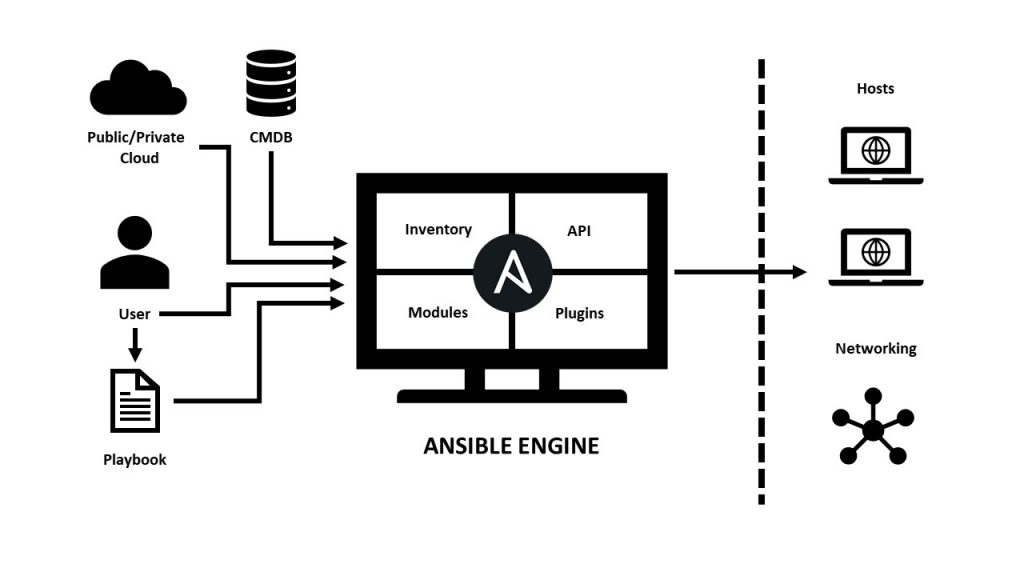
Ansible Tower – The enterprise foundation of Ansible Automation Platform, helping organizations scale IT automation, manage complex deployments, and govern automation. It allows users to centralize and control their IT infrastructure with a visual dashboard, role-based access control, and more.
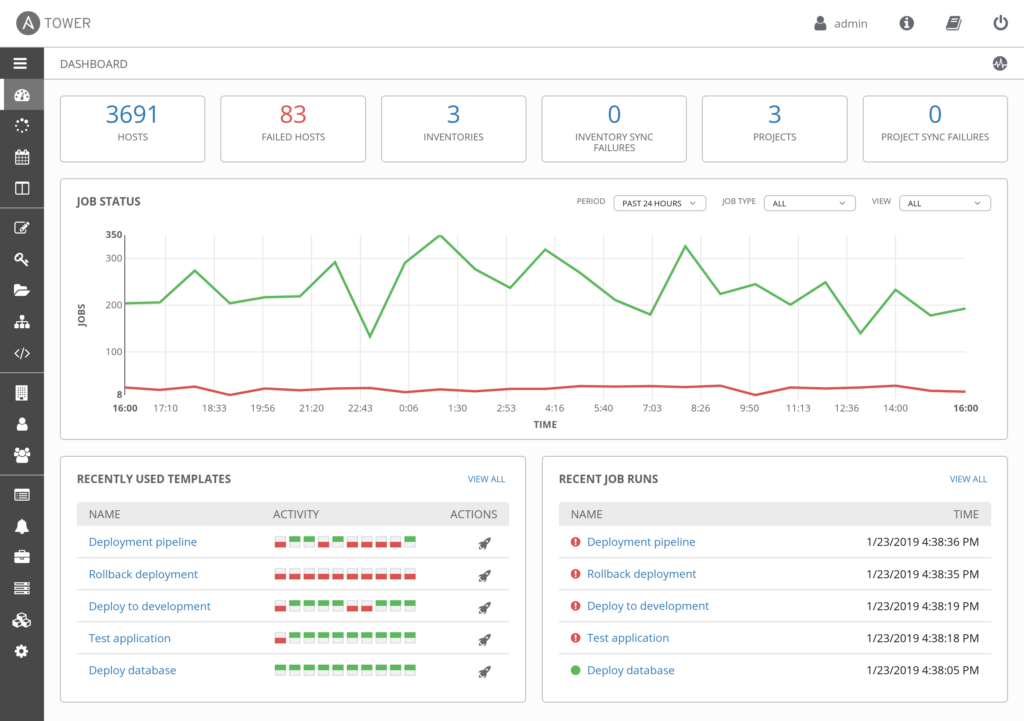
Content Collections – Make it easier for Ansible users to get up and running with precomposed roles and modules. Backed by a robust partner network of certified modules, requires less upfront work by the customer.
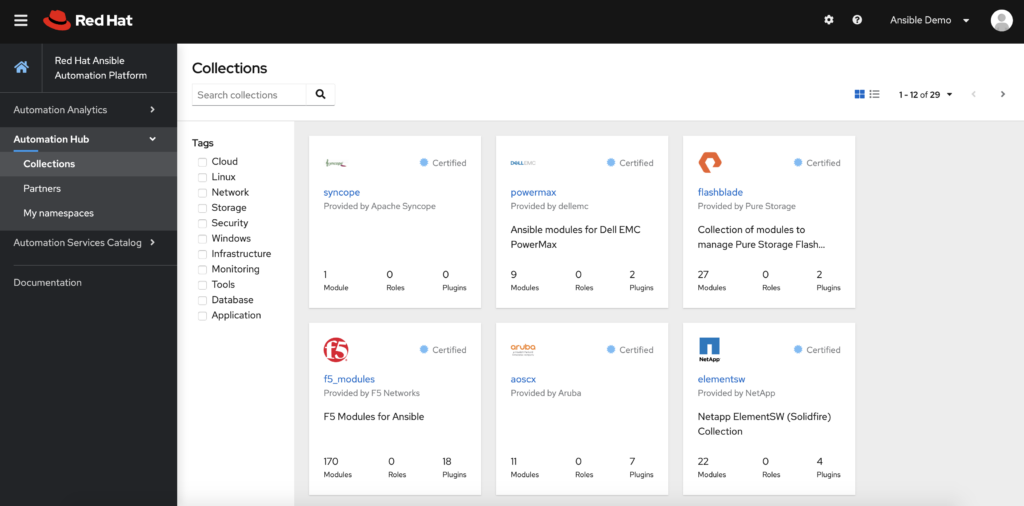
Automation Hub – The official location to discover and understand Red Hat-supported Ansible content and Ansible Certified Partner content. Find precomposed content written by Ansible Certified Partner organizations and quickly share that content with other users.
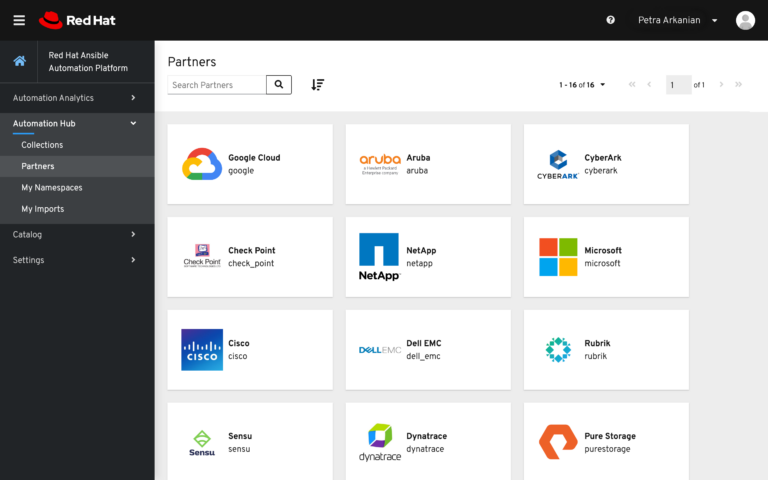
Automation Analytics – runs analytics across multiple Ansible Tower clusters, analyzing usage, uptime, and execution patterns across different teams running Ansible. Users can analyze, aggregate, and report on data around their automation and how that automation is running in their environment.

How does Ansible look from the inside?
The keyword here is Playbook. Ansible uses Playbooks to automate IT ecosystems. Essentially, Playbooks are YAML definition of automation tasks, and they describe how a particular segment of automation should be done, and it is human readable. Playbook clearly states what each individual component of your IT infrastructure should behave but still allows components to react to discovered information and to operate dynamically with one another. This responsiveness of Playbooks plays a significant role when you use Ansible for large-scale automation.

If we zoom in and look into Playbooks in more detail, they consist of plays that define automation across a set of hosts, and those set of hosts is called inventory. Each play is composed of various tasks that can target one, a few, or all the hosts in the inventory. A task is a call to Ansible modules, and a module is a small piece of code for doing a specific task. Ansible includes hundreds of modules, from simple configuration management to managing network devices and maintaining infrastructure on major cloud providers. This means that tasks can span from placing a simple configuration file to target machines, to spinning up the entire public cloud infrastructure.
Those included modules in Ansible have a specific idempotency feature, and that means that they check if a particular task needs to be done before executing it. It means that if, for example, we want to start a web server, the configuration is only done if the server is not already started. This ensures that the configuration can be applied repeatedly without side effects.

On top of this, the user can encapsulate the Playbook into a reuseable role. Thus, it can be used if a user wants to apply a standard configuration in different scenarios. I already talked about this at the beginning of this blog. This is the feature that can eliminate a point of misunderstanding between various teams in a company because you can provide the same server configuration role that can be used in the development, test, and production automation. Check out the Ansible Galaxy community site for thousands of customizable roles to build your Ansible Playbook.
Additional benefits: performance and security
Ansible has one differentiating feature that separates it from other automation tools: agentless architecture. It runs in a “push” model, so no software must be installed on remote machines to make them manageable. Ansible uses remote management frameworks that already exist natively on Linux, Unix, and Windows. And now, we have a performance benefit because no resources are consumed on managed machines when Ansible is not controlling them. This ensures Ansible is a go-to solution for automating large environments with concerns about stability or performance. Additionally, this increases security because only Ansible “modules” are passed to remote machines, and thus those machines can’t see or affect how other machines are configured.
Ansible features remoteness on an even higher level because it has elevated security on a higher level. It leverages sudo, su, and other privilege escalation methods on request when necessary. Additionally, it does not require dedicated users or credentials because it respects credentials user supplies when running Ansible. And this is important because those with access to the control server, for example, cannot make content be pushed out to remote systems without also having credentials on remote systems.

Advanced user?
If you intend to be an advanced user of Ansible and want to use it to automate and orchestrate complex environments, there are a set of features that can make your life easier. To name just a few, I like to mention the conditional execution of tasks, the ability to gather variables and information from the remote systems, the ability to spawn long-running asynchronous actions, the ability to operate in push or pull configuration, a check mode to test for pending changes without applying the change and the ability to tag certain plays and tasks so that only certain parts of the configuration can be applied, etc. The best thing about Ansible is that all these features provide a logical framework for automation and orchestration at scale. It can be understood by anyone from the developers to operators to CIOs.
One theoretical example of complex automation
Ansible would not be what it is if it could not do more than just one stream automation tool. Complex orchestration with Ansible can be achieved with zero downtime by combining different tasks into a Playbook. For example, let’s say that the infrastructure consists of:
- Application servers
- Database servers
- Content servers
- Load balancers
- Monitoring system
For example, we want to update the whole system, a live and running environment, and we can’t afford downtime. In this case, Ansible can be used to implement a complex cluster-wide rolling update consisting of:
- Consulting a configuration/settings repository,
- Configuring the base OS on all machines and enforcing the desired state,
- Identifying a portion needed to update
- Signaling the monitoring system
- Signaling load balancers
- Stopping the web application server
- Deploying or updating the web application server code, data, and content
- Starting the server
- Running tests
- Repeating this process for other components or tiers
- Sending email reports and logging
This is, of course, an exemplary model intended to show one possible Ansible use case. The good thing about Ansible is its modular nature, its ability to extend and cover potentially unlimited automation use-cases. So the question is not how to use Ansible correctly; the question is how you can extend it to apply its features to just the proper case and in just the right way for you.
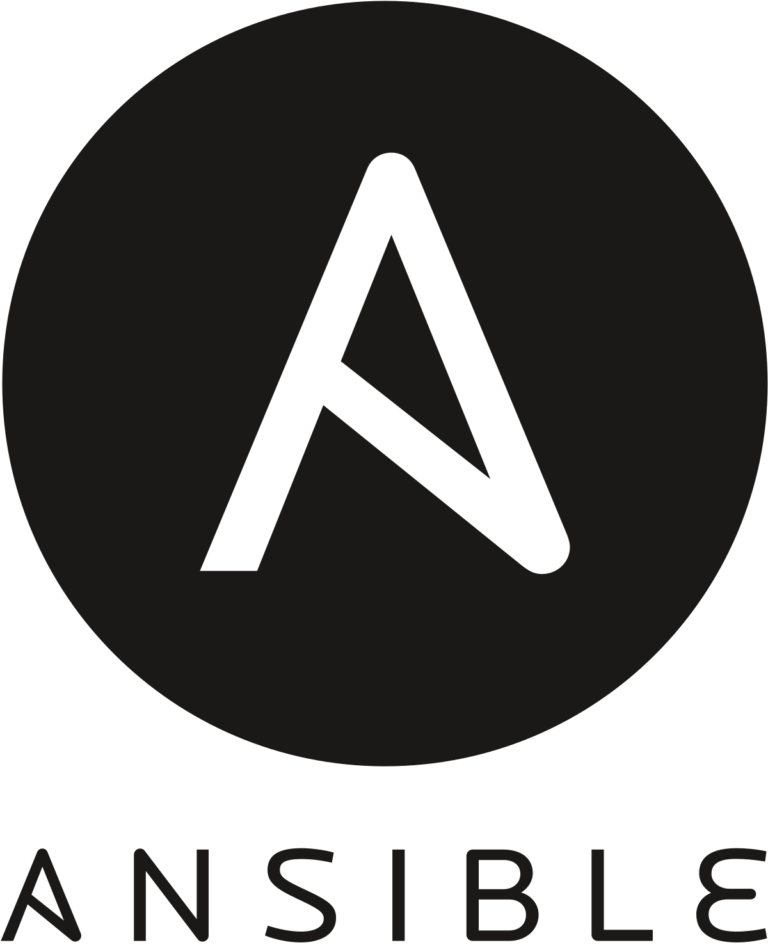
How to extend Ansible?
It is possible that Ansible module database mentioned above does not contain just the suitable module you need. But, Ansible can accept any code as long as it can take JSON as input and produce JSON as output. That means Ansible is a potent tool for developing new ways of orchestrating and automating infrastructures and has unlimited extensibility potential. So its limitations are pretty much the limitations of the user who uses it for automation.
There is also an extension possibility through support for dynamic inventory. It lets Ansible Playbooks be run against a set of machines and infrastructure discovered at runtime rather than statistically defined. Even the runtime behavior of Ansible can be easily extended by the plugin mechanism. New callback plugins can log to log aggregators, send messages to notification services; new connection plugins can be written to access managed nodes in new ways, etc. So, no matter how custom the environment, you can make it work with Ansible.
Understood by everyone
I’m always for making things simpler and more efficient at the same time. But one important thing in making engineers’ life easier is often overlooked. Of course, we always look for powerful tools that simplify our jobs on a logical level. That is ok and true if we border our view to a single operations team or even an operations department. But we rarely think about how to raise efficiency on the level of the whole organization. This is done by increasing understandability between organization branches or departments, and this is often overlooked. Processes can indeed be simplified, and productivity can rise if all IT teams and departments in a firm have a common language that they can understand.

Ansible can help with this because it can accomplish all types of automation tasks. Yet, it doesn’t resemble software programming languages but rather basic textual descriptions of desired states and processes while being neutral to the types of processes described. Thus, it can be understood even by those untrained in reading those configurations. This is the beginning of, if not the solutions, to the communication issue I mention above, and undoubtedly a good start to implement a DevOps culture in your organization.
Capabilities overview
Now, for the end, let’s dive into a quick tour around basic Ansible capabilities. Red Hat Ansible Automation Platform allows users to take three simple actions with their enterprise automation journey:
- Create – by using Ansible’s massive open source community and prebuilt Ansible Content Collections of the most-used Ansible roles, plugins, and modules. Codify your infrastructure and share it across teams and individuals.
- Scale – by easy transfer of your automation into multiple domains and across different use cases.
- Engage – by taking your automation even further with analytics, policy and governance, and content management with the SaaS-based tools in Ansible Automation Platform. These tools include:
- Content Collections, a new packaging format that streamlines the management, distribution, and consumption of Ansible content.
- Automation Hub, a repository for certified content via Ansible Content Collections.
- Automation Analytics for improving automation efficiencies across Red Hat Ansible Automation Platform deployments.

Breadth of integrations
Red Hat Ansible Automation Platform supports a variety of platforms across servers, clouds, networks, containers, and more to meet you where you are in your automation journey:
- Operating systems and virtualization: Red Hat Enterprise Linux®, Windows and Windows Server, VMware
- Networks: Arista, Cisco, F5, Infoblox, Juniper, Palo Alto
- Cloud: Amazon Web Services, Google Cloud Platform, Microsoft Azure, OpenStack®
- DevOps tools: Atlassian, Check Point, CyberArk, Datadog, IBM, Splunk
